Walking With the Ghosts of Exxon
It’s 5 a.m. on the 4th of July, and the alarm goes off. I open one eye and think surely I must have set it for the wrong time, but then I remember. Today I’m heading to Prince William Sound with Shannyn Moore and Zach Roberts. Our goal is to document the lingering effects of oil, still present in the Sound after the Exxon Valdez ran aground on Bligh Reef in the spring of 1989. It’s 2010, and a child born then would be 21 years old now. It’s hard to believe.
I was not in Alaska back then. I, like the rest of the country, watched the news footage in horror at images of oil-soaked otters and birds, people in yellow suits hosing off the rocky shoreline, and aerial photos of a tanker surrounded by boats and thin ribbons of ineffectual orange boom. I didn’t know then that people I would some day know and love were working on the cleanup effort, even as I watched the pictures on the news from thousands of miles away. I never imagined I’d live anywhere near Prince William Sound, but I felt the loss of this faraway place, and I was sad and angry. I was young, and I had a wild notion that I’d go to Alaska to see if there was anything I could do to help, but warnings came across the TV that oil spill responders were there in droves. Do-gooders who wanted to scrub otters were becoming a burden, and nobody should go to Alaska expecting to be able to help. So I stayed on the East Coast and left it to the experts.
But I did find myself in Alaska about a year and a half later. And almost as soon as I arrived, my relationship with Prince William Sound began — sailing past Columbia Glacier amid crackling icebergs; camping in a sandstorm in Jeanie Cove on Montague Island; my first sperm whale sighting flying over the Sound in a small plane; the anxious drive through the newly blasted tunnel to Whittier; hiking on the alpine flower-covered high ground of Perry Island, Bering glacier with its endless swaths of lupine; the sculpted rock formations on Kayak Island, the biggest tree I’d ever seen hidden in the forest of Little Johnstone Bay. Over the years, the Sound became real – no longer a distant abstraction.
And yet, the oil spill on TV, and this place I visited in my real life remained strangely disconnected. I knew there had been a tragedy here, but it remained out of my experience, out of my sight, out of my touch, and smell. I was always a degree of separation from those who were there. And that was OK with me, because even imagining the kind of environmental disaster that had happened in this place brought such overwhelming sadness, it was simpler and less painful to leave the disconnect in place.
But with the eruption of the Macondo well in the Gulf of Mexico, where oil in the amounts of the Exxon Valdez spill pours into the Gulf in a matter of days, and with no end in sight, people have turned new attention to those remote shores in Alaska, looking for answers, looking for lessons and seeking some kind of crystal ball that will reveal to them the future of the Gulf.
And so this morning, Shannyn Moore, Zach Roberts and I head out to go find some answers. We arrive as the tunnel from the Seward Highway to the coastal town of Whittier opens to automobile traffic. The tunnel is shared alternately through the day by cars and trains. After far too long driving in the claustrophobic dark tunnel, we pop out the other side and into the sunlight. I say that I think the slogan for the town should be “We’re Whittier Than You,” making my sleepy companions laugh. Zach says that the slogan obviously isn’t true, or they would have thought of it before I did.
We drive along the waterfront and find our destination — Lazy Otter Charters. We meet Mike Bender, our captain, and first mate daughter Morgan. We grab our gear, walk down the wooden dock, and load everything on to the 30-foot aluminum boat, The Explorer. Our first stop would be to visit well-known naturalist and charter operator David Janka on his boat The Auklet. He’ll know where we can go to find oil. As we pull out of Whittier harbor, It feels a bit like we’re traveling to the Oracle.
The day is overcast, but dry, and calm flat seas assured us a quick and easy trip. We see a lone humpback whale identifiable by it distinctive blow, and we see the large flukes of his massive tail as he does a deep dive. We pass between small rocky islands where kittiwakes roost. I take a quick video.
We eventually spot the Auklet and pull alongside. David Janka welcomes us aboard with a friendly hand up. He knew that there were many places one could go to find oil in its various forms.
We decide that we’ll head to Knight Island, about halfway between where we’d started our trip in Whittier and where the Valdez had slammed into Bligh Reef twenty one years ago. I wish we could stay longer and talk, but it was time to bid the Auklet and its captain farewell and head out.
After a few minutes, we spot a school of Dall’s porpoises riding the wake of a large blue fishing boat. These critters are friendly, and curious about boats. Much to our great luck, the porpoises abandon the fishing boat to come check us out — a new playmate in the water. They arrive one by one. Like hyper pygmy orcas, they zoom back and forth across the bow, leaping this way and that. I sit on the very tip of the bow with my camera pointed down, trying to get still shots of these amazing speed demons weaving in and out. One leaps and comes within inches of touching the bottom of my foot. They have such energy and playfulness, it’s hard to imagine that these creatures aren’t experiencing joy.
I find myself getting lost in the day — the sea spray, the wildlife, the rhythmic pulse of the engine, the snow-capped mountains, and the rocky islands covered with spruce and seaweed. It isn’t until we are only a few miles from our destination that my mind is tugged unwillingly back to our purpose — the oil. I find it harder to feel the usual happiness and calm I feel on these waters. Until yesterday, I didn’t know where the oil could still be found. I knew it was “out there,” but the lack of a precise location made it easier. Knowing makes it different.
I have the sense that I’m on the way to an appointment — a deposition — a confession — a forensic examination — and that I will hear a story I don’t want to hear. Like I’m about to speak to a dear friend who has been the victim of a horrible crime, but has never been able to talk to me about it until today. You’d never think anything had ever happened here by looking out the window. But looks can be deceiving.
Zach is smiling and cleaning his lens from the salt spray after getting footage of the porpoises. Shannyn is talking with the captain about the boat. Morgan is sitting on the bow and suddenly turns around and laughs. A rufous hummingbird just flew up and investigated her red and pink hat hoping it was some kind of wonderful huge flower.
We are pulling into the shallows now, and the water has changed from dark steel grey to beautiful emerald green. I try to imagine this passage filled from shore to shore with oil, as it was after the spill, and I can’t do it.
We pull up to the beach and hop off the boat on to large grey boulders covered with barnacles and seaweed. We pick our way over the rocks about 100 feet to an open, flat marshy area where a small shallow stream trickles from between the hills on either side, feeding into the Sound. I will find out later that the place I’m standing is called “The Death Marsh,” or “Diesel Beach.” I walk along the little spring and my boots begin to squish, and pop out of the spongy muck with a perfect mud-sucking sound-effect noise.
Unsure where to go or what to do, I figure our time is limited, so I may as well just pick a spot and dig. so I unpack a small garden trowel from my backpack, and I began digging in a spot covered with gravelly sand. About the third shovelful down, the sand has turned to a strange mud. It’s gloppy and sticky and clings together with a slimy looking texture. It’s hard to get it off my trowel. I smell something I can’t put my finger on. Water starts seeping in to the bottom of the hole — water with a sheen of pink, purple, green, orange… it’s clearly an oil sheen. I watch it for a moment, stunned. I didn’t know what to expect, but for some reason this hadn’t been it. I wonder now about the smell, and I pick up a plum-sized clump of mud with the trowel and draw it to my nose to see if I can smell any trace of oil in this marshy sediment. I recoil and almost gag as the unmistakable smell of petroleum fills my nose, my eyes, my lungs. It wasn’t just a swampy smell, I’d noticed — it was oil, and it was powerful.
“Smell this,” I call to Shannyn and Zach, not even thinking to check if they’re filming or recording. They sense my urgency, and come over to where I’m standing, holding the trowel full of mud, and they smell. We look at each other’s eyes, like we are bearing witness to a horror, which we are — even though we feel decades late.
My first hole has filled with oily seepage, and my second hole, and a hole that Shannyn has dug. And then I notice that we haven’t even needed to dig. The footprints left by our boots on the surface have also filled with oily soup.
We have half an hour left on this beach. I walk around in a daze, digging little test holes, squishing through the oily mud and watching my footprints turn into rainbow covered pools. There are small mussels, and seaweed all living here on top of this thin veneer — this fragile skin on the surface of this disaster that bleeds with a footprint. I take a few short videos, and forget what I’ve said by the time I’m done. It’s hard to speak, and I keep my voice low. It seems fitting to be gentle with this victim — at this crime scene — at this perpetual funeral.
I walk the creek like I am walking with a ghost. The enormity of the situation is hard to fathom. It’s been 21 years since the spill, and here is a place exposed to air, and wave action, and sun, and wind, and rain, and snow, and it still looks like the site of a horrible ecological disaster that could have happened yesterday. As I walk, I notice places where even footprints aren’t required to see a blue/pink opalescence oozing on the surface. The oil just sits there, ready with the next rain or tide to trickle into the stream and out into the Sound.
Suddenly, thoughts of the Gulf of Mexico flood my mind. I think of BP telling everyone not to worry — that BP “does business right.” I thought of Exxon, 21 years ago telling the residents of coastal communities in the Sound that they were lucky it was Exxon they were dealing with. “We will make you whole,” they said. This place is not whole. The people of the Sound are not whole. I think of BP covering up the thick layers of oil washing up on the Gulf coast with dump trucks of clean sand so everything will look fine, dumping hundreds of thousands of gallons of dispersants that cause more harm than good. Pouring toxins on toxins, death upon death. They spend their energy trying to create another skin, another mask to hide the crime done to another place. They hope that place will forget, but it won’t. I look down into my oily hole. I wouldn’t want my children digging on this beach, even now.
I find myself feeling my throat getting tight from the ever-increasing petroleum stench, and from the feeling you get right before you cry. This place I loved still held the scars of abuse, of violent crime, of life stolen so long ago. This wound was raw, and toxic and there was nothing left to be done. There were no cleanup crews here, there was nobody doing anything, and nobody would do anything ever, because it’s over. Exxon said so.
I touch the surface of the pool with my fingers, which are now safely in rubber gloves. The colors dance and swirl. I stare almost mesmerized. I hadn’t realized I was going to cry, but two tears fall at the same time — not down my cheeks, but because I am bent over the hole, they fall right in the oily puddle. Two more drops of salt water to dilute this toxic mess. That was my contribution today, and it was nothing.
“It’s time to go,” says Morgan, noting that this oil has been here longer than she’s been alive. We quickly scoop up some oily water and mud into mason jars that we bought this morning, and we head back to the boat, picking our way over barnacle-covered rocks. We rinse our boots before boarding, and they leave a sheen in the water. I’m glad it’s time to go. Not only am I feeling more than a bit helpless and overwhelmed, but the smell has given me a headache, and I’m beginning to feel nauseated. I cannot imagine the spill responders back then, and the ones today, working in a far more toxic environment than this, with no respirators, and without adequate protection, day after day, for months at a time. The people who send them to do this work and sign their paychecks don’t care if they get sick.
Back on board we sit, each of us trying to process what we’ve just seen. We don’t say much as we pull out. A few minutes later we see the porpoises again, a few hundred yards off the starboard bow, and for a moment we smile as they break the surface, leaping and disappearing again and again. I grab my camera out of reflex but can’t bring myself to use it. We each sit at the table below deck with our arms folded in silence, and we look far away, each pair of eyes at a different point on the watery horizon.
I’m thinking of the ghosts of those people who are gone — from the passage of time, from the sickness that came to them from cleaning up this mess, and some by their own hand in despair years after the spill. I think of the ghosts of the hundreds of thousands of seabirds we don’t hear. Of the herring and the herring fisherman who never came back. There are living ghosts, too – the pod of orcas that dwell in the Sound that will be extinct in 25 years according to estimates. They don’t know they have 25 years left, but I do.
The silence is punctuated by short bursts of conversation, free flowing thoughts that pop out of our heads. We remember how Rush Limbaugh called Prince William Sound “pristine” now. We talk about the Exxon Valdez itself, and how the vessel got renamed and how we think it’s in the Mediterranean somewhere. Shannyn tells me I have red bumps on my neck, like hives, that were not there earlier. The smell of petroleum is still in the air though we are far from the beach. I smell it on my hands even though I don’t think I touched it. Zach says he kneeled down and got oil on the knee of his pants, so maybe that’s it. There is probably still oil on my boots. I don’t want to smell it any more. The inside of my mouth tastes funny. Shannyn says the inside of her mouth tastes like pennies. I eat a chocolate chip cookie hoping it will help. Now my mouth tastes like chocolate chip cookie and diesel fumes.
We wonder what we’re going to do with the samples of oily water and mud that we scooped into jars before we left. We don’t know. I don’t even really know why we took them, except for proof tomorrow when we wake up. It’s all surreal. I suddenly feel like I want every candidate for office to take a deep whiff of what’s in the jar. I’m so angry.
Our boat stops on East Flank to pick up some kayakers, and a happy boxer dog and take them back to Whittier. I know that my experience in the Sound today was very different than theirs, and I don’t want to ruin it for them so I try not to talk too much. One of them is a Kindergarten teacher, which gets me thinking about the future. I wonder if any of the kids in his class next year will find oil on these beaches when they’re Morgan’s age, or my age, or our captain’s age.
Zach comments again about the smell we can’t get rid of, as he rubs Purell on his hands. He says he’d rather smell alcohol than this oil. He looks angry too. Shannyn is sitting outside, her back against the cabin looking out across the water. She was here when the spill happened. She’s been there on the deck a long time. I sit here and type whatever words will come out, because I feel like I have to be doing something, and I don’t know what else to do.
My thoughts go back again to the Gulf as they have been doing all day, like a moth returning to the same lightbulb over and over despite the burn. There is no end in sight for their disaster, which now dwarfs the Exxon Valdez. The ghosts of the Deepwater Horizon and BP began with the 11 men lost in the explosion on the platform, and the sealife, and the birds. But the ghosts of their future still walk and swim. And I don’t know how we are going to do it, but I know we must change. We play with poison pretending it’s safe, and we risk our own lives, the lives of our children, and the planet as we know it. Fossil fuels are our death sentence — one we impose on ourselves. We don’t want to stop killing ourselves or our planet because — it’s hard. We’ll have to change. We won’t be able to do things like we used to. It will be inconvenient. It’ll cost a lot of money.
Right now, with my throat still tight and the smell of petroleum still burning my nose, skimming across the waves of this beautiful place that hides its brokenness under a skin, having just gazed into that crystal ball for the Gulf, I don’t care what it costs to change. The price of not changing is too high.
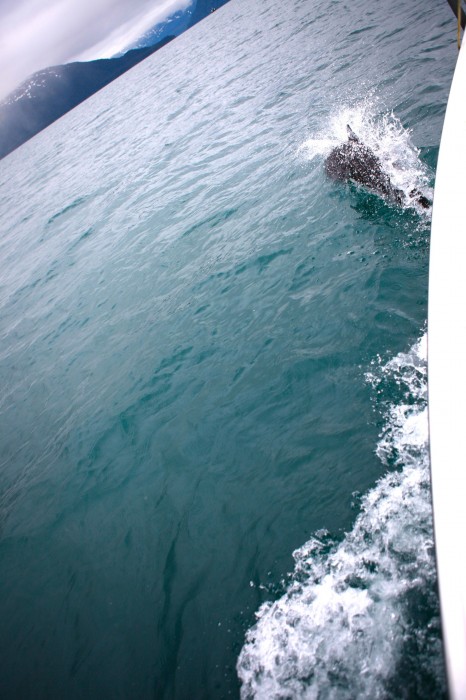


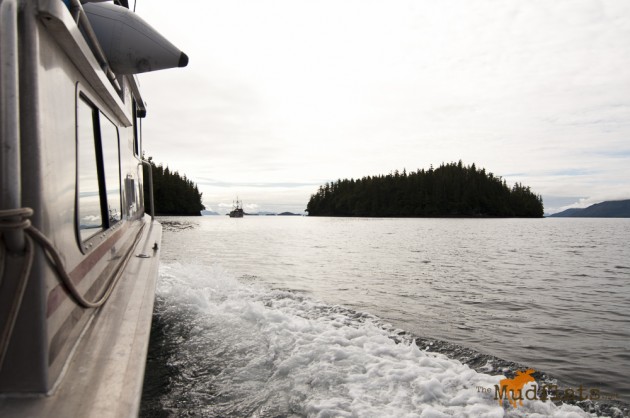
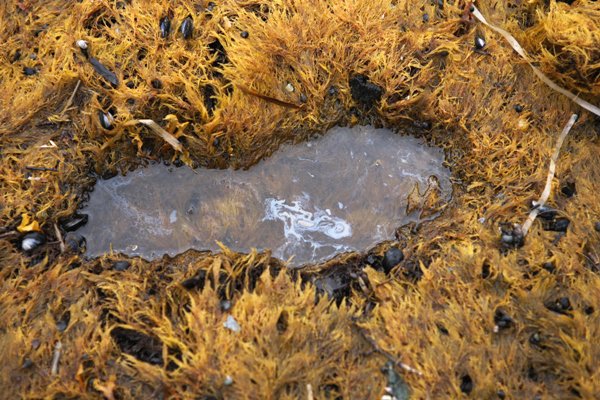

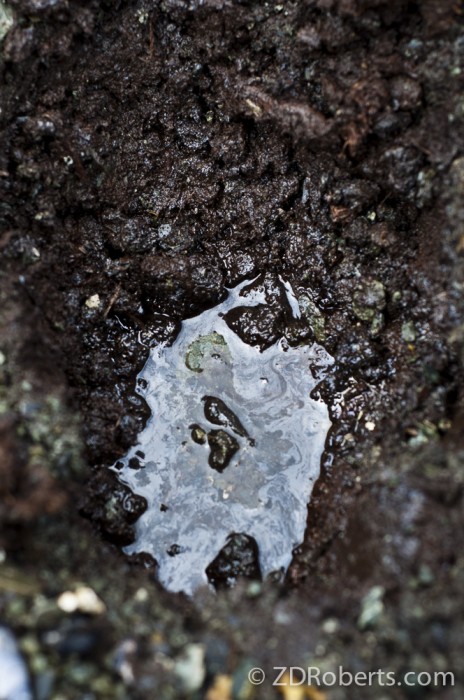
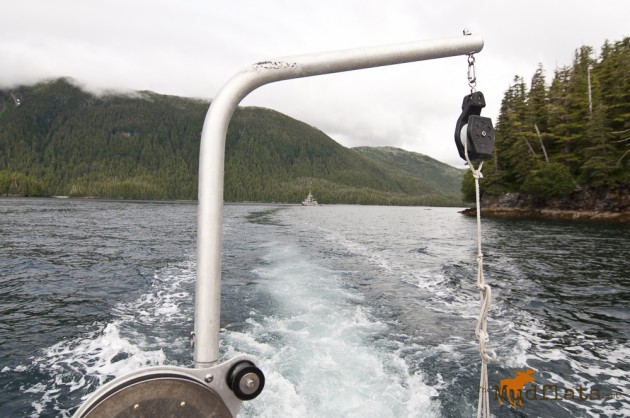
Until we change our need for oil this will continue. And yes we use diesel in our fishing boat too. But solar runs our off grid lifestyle.
efforts could be made to clean up, and charge exxon will the bill. it wont be easy, and it will be expensive, but it is exxons fault the oil is still there.5 billion dollars wont restore pws, 50 bilion wont do it, but it will go a long way towards cleaning it up..
What’s left to be said? You who were there,live there,visit there,fish there know what was lost. A hundred years from now,you’ll be just a footnote in history. Future generations will only know PWS for what it is,not the way it was and should have always been. A hundred years from now will there be anyone who cares?
Thanks for re-posting this, Jeanne.
You’re welcome. Nothing has changed much, sad to say.